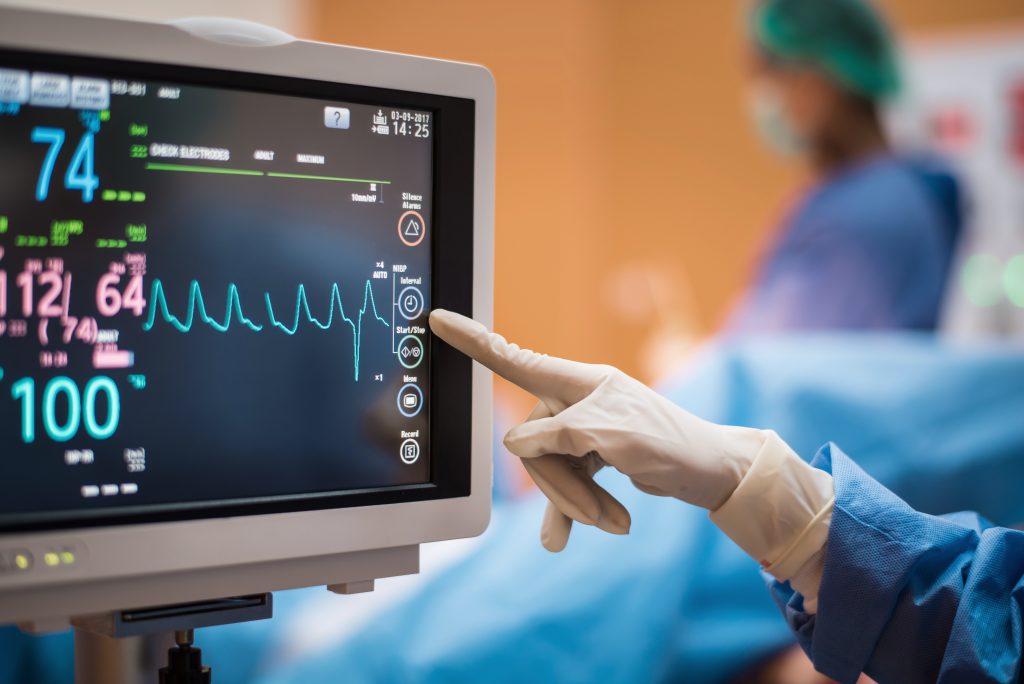Check For Signs Of Heart Disease With An Electrocardiogram
An electrocardiogram, called an EKG or ECG, is a quick and painless test that records your heart’s electrical activity to check for signs of heart disease. A technician attaches multiple electrodes to your skin in various body places, tracking electrical impulses.
What Can an EKG Check For?
With an EKG, your doctor can check for multiple potential heart problems. These include irregular heart rhythms, poor blood flow, thickened heart muscle, electrolyte abnormalities, or even heart attacks. Any of these heart problems are risk factors for heart disease.
Heart disease is a catch-all term that includes many types of heart problems, such as arrhythmias, pulmonary hypertension, and, most commonly, coronary artery disease (CAD). With an EKG, you can catch these early before they develop into more serious issues like heart failure.
How Does an EKG Work?
A technician attaches multiple electrodes to the skin on your chest, arms, and legs. During a resting EKG, you’ll lie flat while a computer records your electrical impulses moving through your heart, creating a picture of the activity. A stress test can also be conducted, where the same test is administered to check your heart rate while you exercise. Besides the standard EKG tests, other kinds of tests can also be used to test your heart.
A Holter monitor is a portable EKG that monitors the electrical activity of your heart 24/7 over 1 to 2 days. This test may be suggested if your doctor suspects you have an irregular heart rhythm, heart palpitations, or low blood flow. You can go about your daily routine except for showering during this test. You’ll record your activities and any symptoms you notice during this time.
An event monitor is a less intensive test for occasional symptoms. This device has a button you can press whenever you notice symptoms, recording and storing your heart’s electrical activity for a few minutes. Because of the low frequency of this test, you may need to wear the device for weeks or even months.
A loop recorder is a device implanted into your body under the skin of your chest. It has the same functions as an EKG but allows continuous remote monitoring of your heart’s electrical activity. This device searches for irregularities that cause more severe symptoms, such as fainting and heart palpitations.
What Symptoms Should You Get Checked with an EKG?
If you have any of the following symptoms, it may be time to get an EKG test:
- Chest pain
- Dizziness or lightheadedness
- Heart palpitations
- Shortness of breath
- Rapid pulse
- Weakness or fatigue
- Inability to exercise
If your family has a history of heart disease, your doctor may suggest an electrocardiogram even if you aren’t displaying any symptoms.
Risks Of An EKG
There are little to no risks involved with EKG testing. Some people with skin sensitivity can experience a rash where the electrodes are placed; however, this usually goes away independently. Patients who undergo the stress test may be at risk of a heart attack, although this is related to the exercise and not the EKG itself.
An EKG only monitors the electrical activity of your heart; it does not emit any electricity. This means the device is completely safe, even during pregnancy.
How To Prepare for an EKG
While getting ready for your EKG, there are a few things to consider:
- Remove any jewelry
- Shave hair in areas where the electrodes will be placed
- Avoid drinking cold water directly before the test (this can cause changes in electrical patterns)
- Do not participate in any exercise or other activity that will increase heart rate before the test
- Keep the room at a moderate temperature to avoid shivering (movement will affect the accuracy of the results)
Results Of An EKG
Your EKG results can sometimes be available the same day as your test or by the next appointment. The results of an EKG will give your doctor more details about the following issues:
- Heart rate: Heart rate can typically be measured by checking your pulse. An EKG is helpful if your pulse is irregular, too fast, too slow, or at odd moments. In these instances, your pulse will be difficult to determine regularly. An EKG can help determine an abnormally fast heart rate (tachycardia) or an unusually slow heart rate (bradycardia).
- Heart rhythm: An EKG can determine if you have an irregular heartbeat (arrhythmias). Arrhythmias can occur if parts of the heart’s electrical system aren’t working properly.
- Heart attack: An EKG can show evidence of previous heart attacks or a current one. It helps to give detailed results on which part of the heart has been damaged and the extent of the damage.
- Blood and oxygen supply: An EKG done while experiencing symptoms will help your doctor determine if chest pain is caused by reduced blood flow to the heart.
- Heart structure: An EKG can provide doctors with more information about whether you have an enlarged heart, heart defects, or other heart issues.
How CVG Can Help
CVG offers electrocardiograms to assess your risks of heart disease. We provide various EKGs so that we can determine how your heart is functioning and what steps you will need to take to prevent further problems. If these tests determine a problem, we offer treatment solutions to help against heart disease.
Learn more about our services here, or schedule an appointment to talk to our doctors.
Back to services




